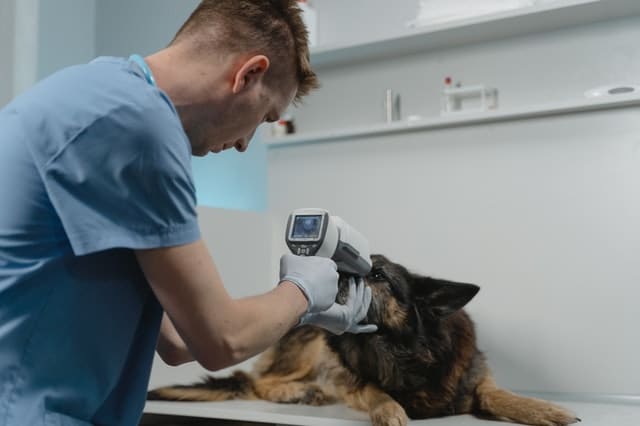Veterinary Diagnostics: COVID-19 Pandemic Can’t Slow Momentum of $3.5 Billion Market
“The veterinary diagnostics market represents a fast-growing opportunity to IVD companies and others able to capitalize on the unfailing need to ensure agricultural productivity and the growth in consumer spending on companion animals.” – Kalorama Information
The veterinary diagnostics market has experienced steady growth through the ravages of the pandemic and is forecast to produce continued growth in coming years, according to analysis in The World Market for Veterinary Diagnostics, 5th Edition, a new report from Kalorama Information.
The global veterinary diagnostics market’s revenues of $3.5 billion in 2021 reflect a growing demand for companion animal diagnostics (pets and domestic animals including horses) followed by the steady performance of the food animal segment (livestock and production animal). Ultimately, the market is expected to experience a compound annual growth rate (CAGR) of 7.7% from 2021-2026. Note that diagnostic revenues in the report do not include imaging diagnostics.
The veterinary diagnostics market represents a relatively fast-growing opportunity to in-vitro diagnostic (IVD) companies and others able to capitalize on the unfailing need to ensure agricultural productivity and the growth in consumer spending on companion animals. Companies enter the veterinary diagnostics market through acquisitions, product development, and licensing or OEM agreements. Low barriers to market entry and a lack of insurmountable competition makes superior rates of growth in certain segments of the veterinary diagnostics market realizable for a broad range of companies.
IVD instrumentation and products have been extensively applied to veterinary healthcare as various assay forms, analytes and analyzers are transferrable from the clinical space to the veterinary clinic and laboratory. The veterinary diagnostics market also supports many test markets related to animal-specific diseases (e.g., bluetongue disease, classical swine fever, feline leukemia) and zoonotic diseases (or diseases capable of being transmitted from animals to humans such as influenza, transmissible spongiform encephalopathies, and brucellosis).
Veterinary diagnostics comprehensively support animal health, through:
- routine testing of companion animals during clinical visits or check-ups;
- diagnosis of disease in symptomatic companion animals;
- zoonotic disease surveillance in wildlife populations;
- disease screening and confirmatory testing in livestock and production animals as part of disease control efforts.
International trade, public health, agricultural productivity, consumer confidence and companion animal-owner relationships are all dependent upon effective and increasingly specialized veterinary diagnostics products. Expertise in molecular diagnostics, virology and bacteriology is crucial in the food animal (livestock and production animal) diagnostics space as emergent threats and outbreaks necessitate the development and improvement of assays for newly implemented disease control programs. Technical barriers to entry in the lucrative companion animal diagnostics space are relatively low. Many market participants in companion animal diagnostics have adapted clinical diagnostic analyzers – hematology analyzers or blood counters, chemistry analyzers, critical care analyzers – with modifications limited mostly to reference ranges, sample preparation and some parameters.
For more information or to purchase The World Market for Veterinary Diagnostics, 5th Edition visit: https://kaloramainformation.com/product/the-world-market-for-veterinary-diagnostics-5th-edition/.


